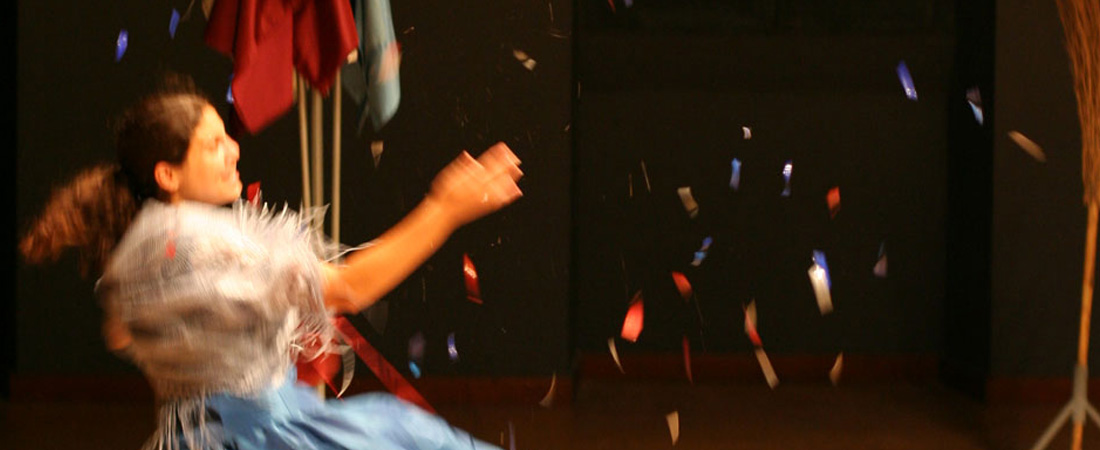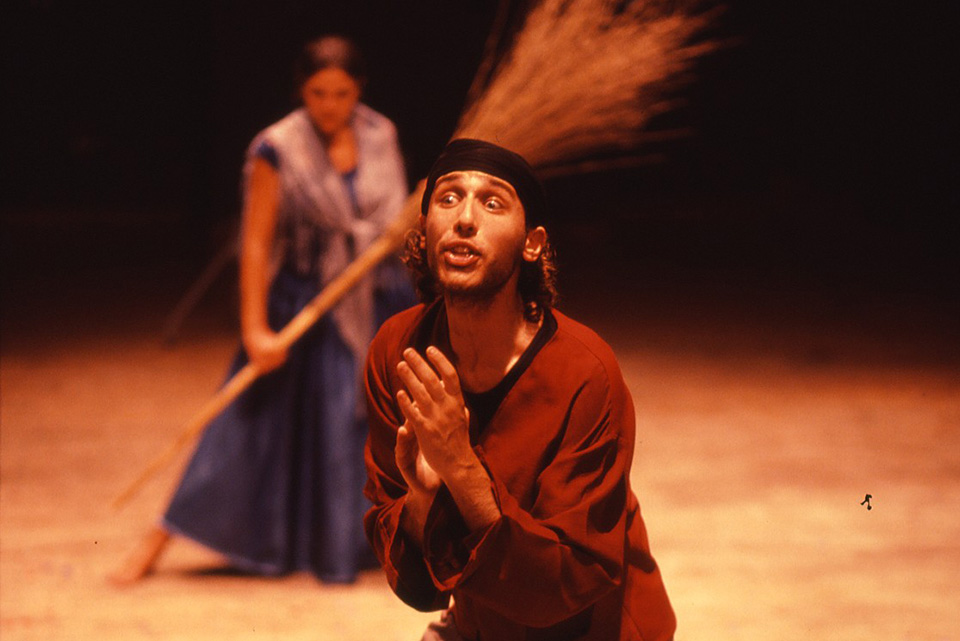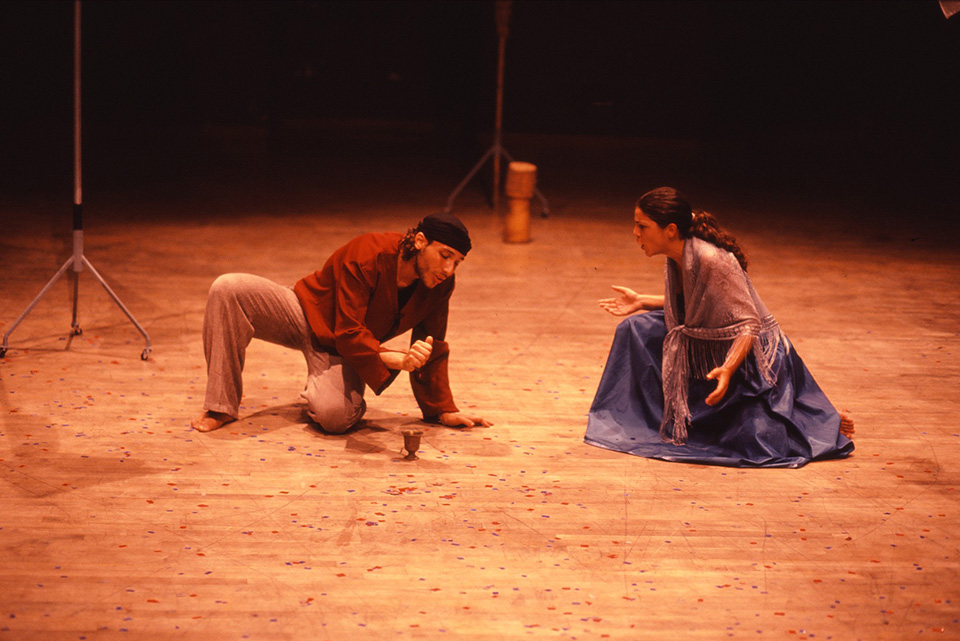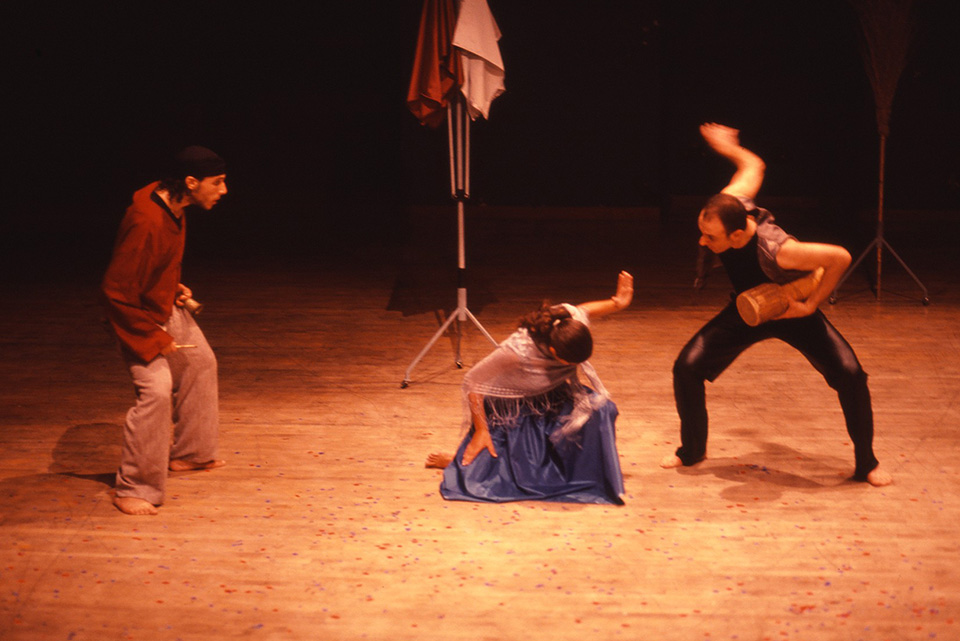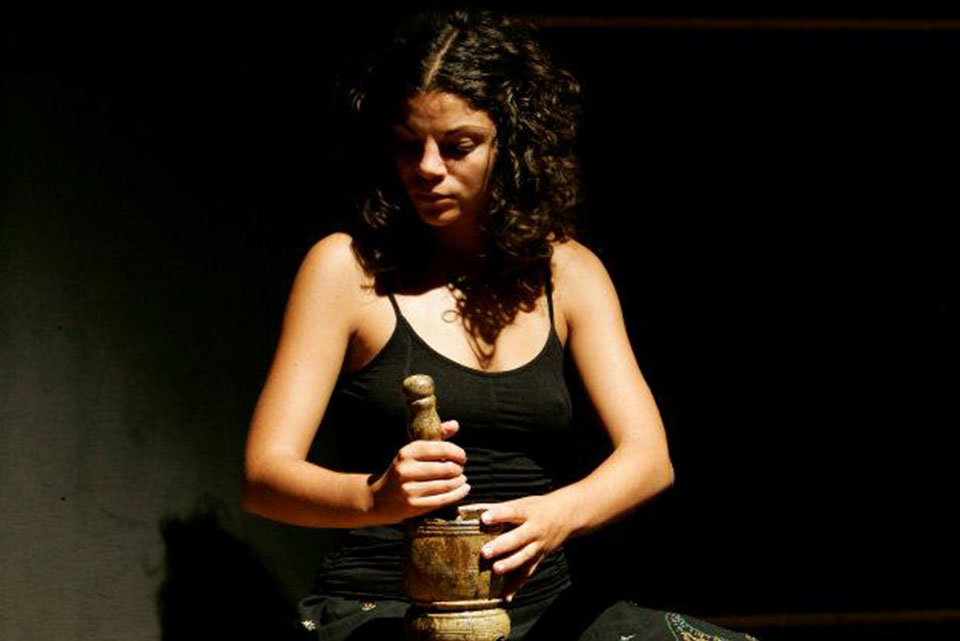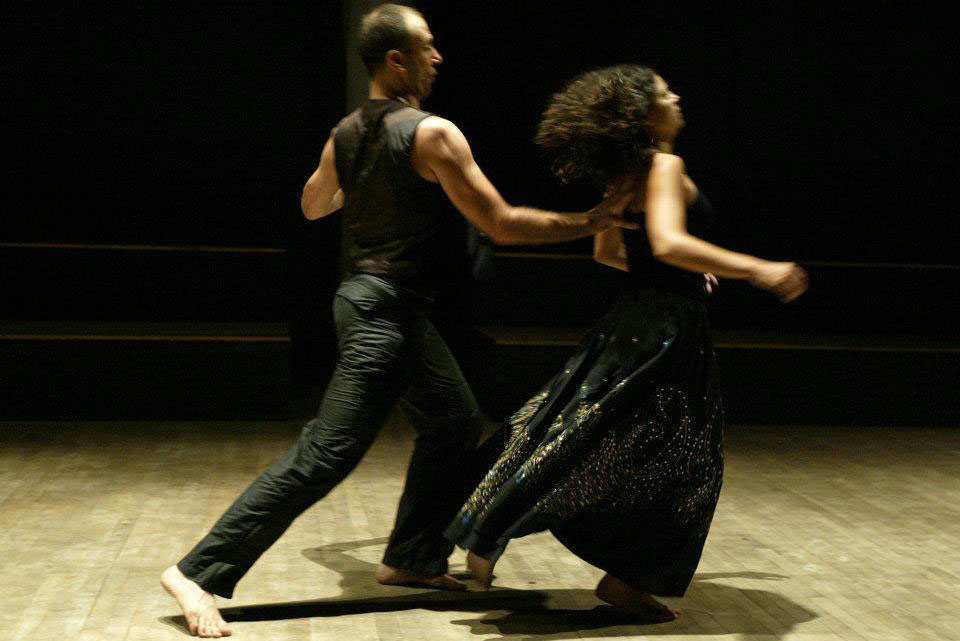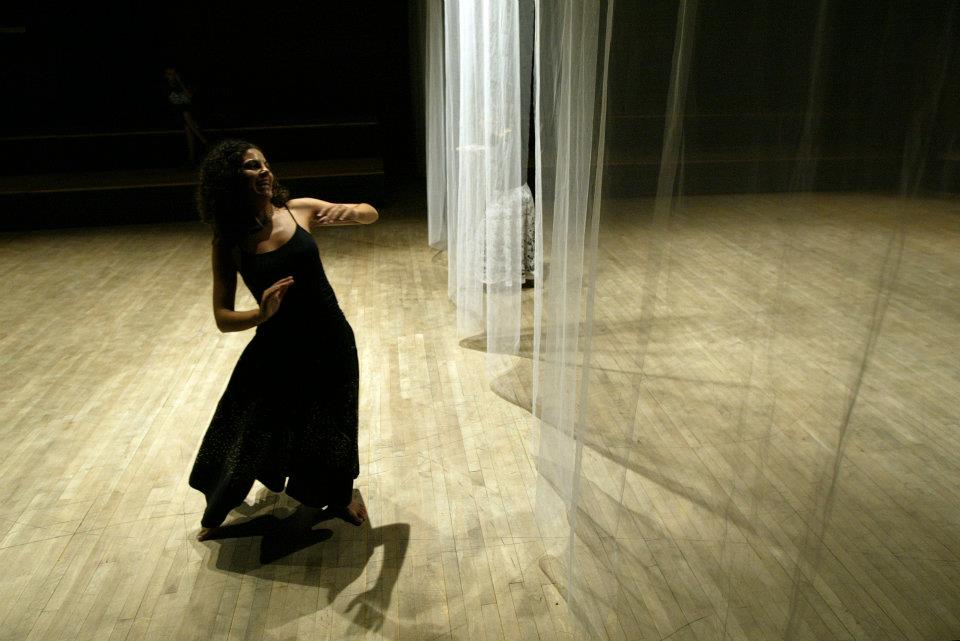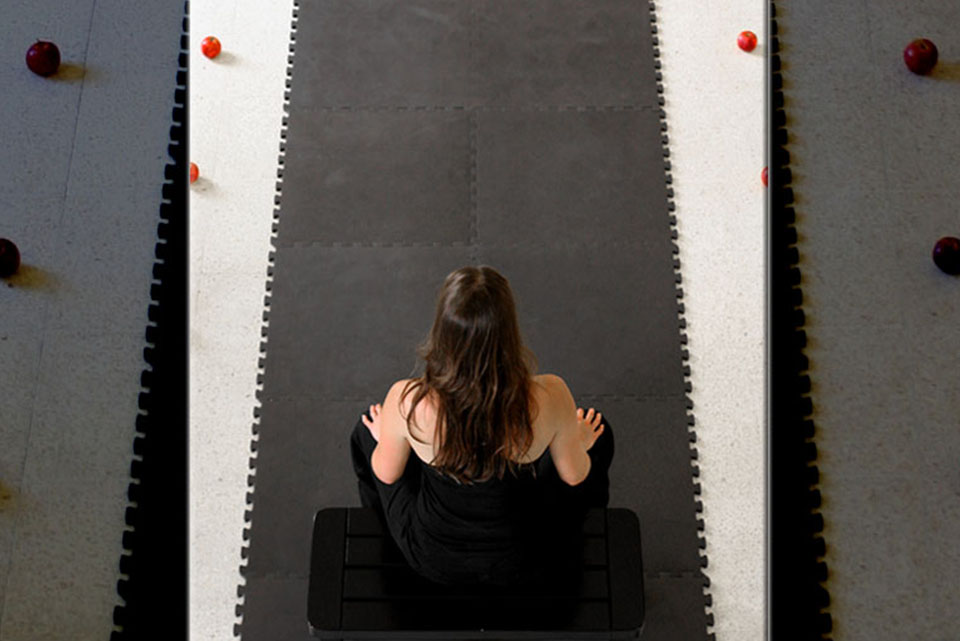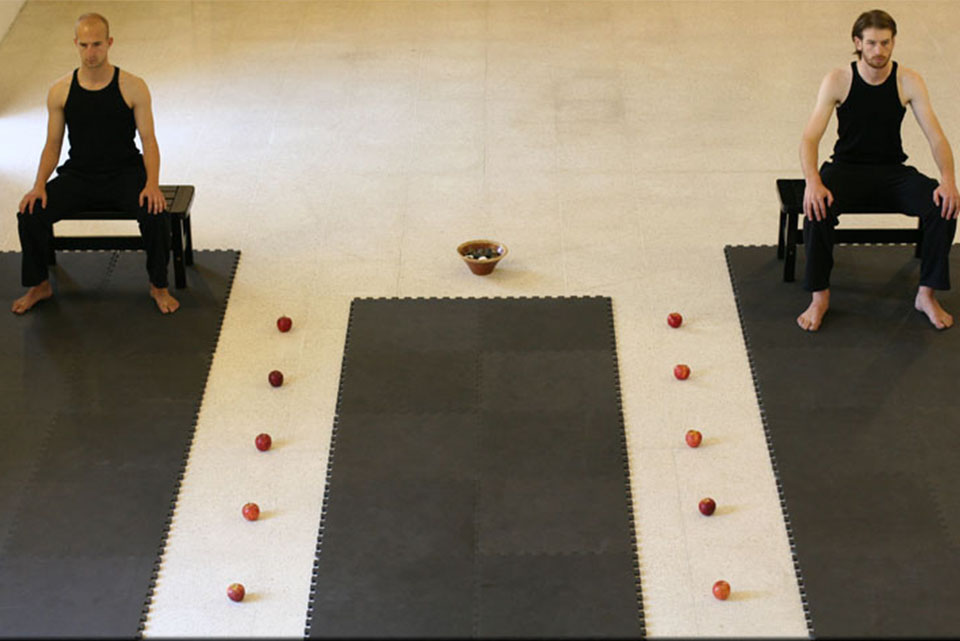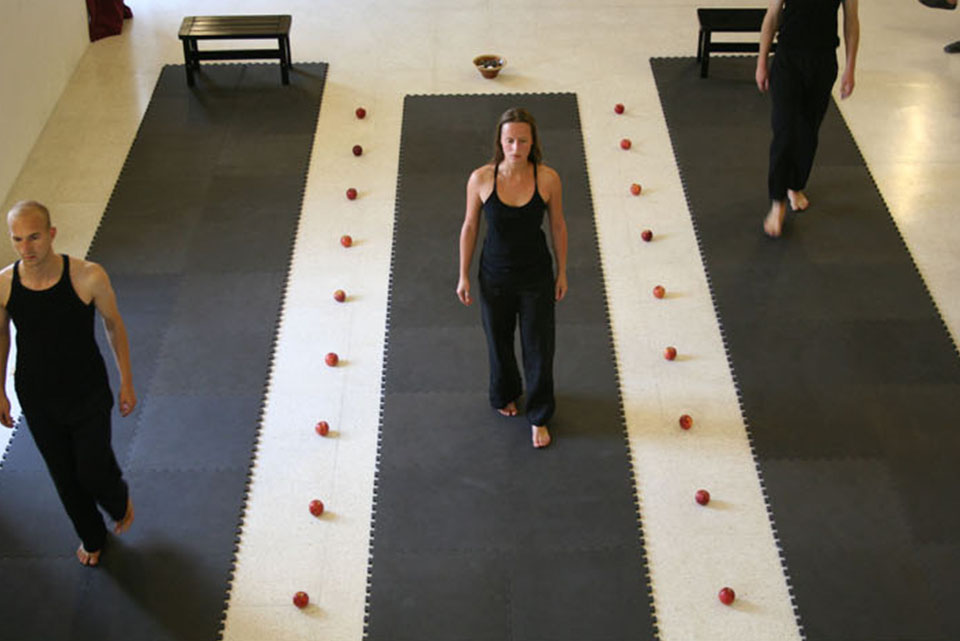In 2005 a new performance process was launched by Icarus Project (Malta). Taking the cue from the previous performance’s point of arrival, a vocal structure was devised as a point of departure for the new work.
La Reina (2006) was the first presentation in this process. Spanish for ‘The Queen’, La Reina, was inspired by Cervantes’s masterpiece Don Quixote. Material from Cervantes’s work was fused with other literary sources (mainly Pablo Neruda’s poetry) to provide a dramaturgy that explored the carnivalesque. La Reina tapped Maltese and Mediterranean sources in terms of sound patterns and vocal textures by way of traditional songs. The linguistic configurations pertaining to the Semitic origins of the Maltese language were also explored. Physical scores and spatial dynamics were then layered on this vocal structure of texts and songs.
RISK: El Riesgo de La Reina (‘The Risk of the Queen’, 2007) marked the second step in the evolving performance structure. Based on La Reina, RISK explored liminal areas of theatre performance. Apart from the multi-tiered vocality of the songs and texts, the process incorporated daily actions, digital/video projections and an installation-type setting in its performative weave. Structured improvisation and choral work were also explored. The concept and practice of a ‘risk’ structure (i.e. a set task that demands an improvisatory resolution) emerged during this process. The spatial setting of RISK was dominated by an installation of a 5m-by-13m veil-curtain that divided the theatre in two, with actors and audience members located on both sides of the veil.
Duration 56 (2008) announced a departure, in the process marking the closure of the Queen project. For most of its duration, the third phase of the project was named ‘Eternal Queen’ due to the dramaturgical and vocal research on Eternal Feminine by Teilhard de Chardin that was aimed at supplementing the Cervantes material. However, the work on daily actions and spatial patterns within a ‘risk’ (improvisational) structure and an installation-setting, led to the sidelining of the textual dramaturgy in favour of a more abstract piece based on synchronised patterns, energy, and intentions. Called ‘a performance installation’, Duration 56 can be located between training and performance modalities. In exploring the practice of duration, repetition, and improvisation, the ‘Queen’ of Duration 56 became the temporal dimension of space and action shorn of plot, character, and text.
